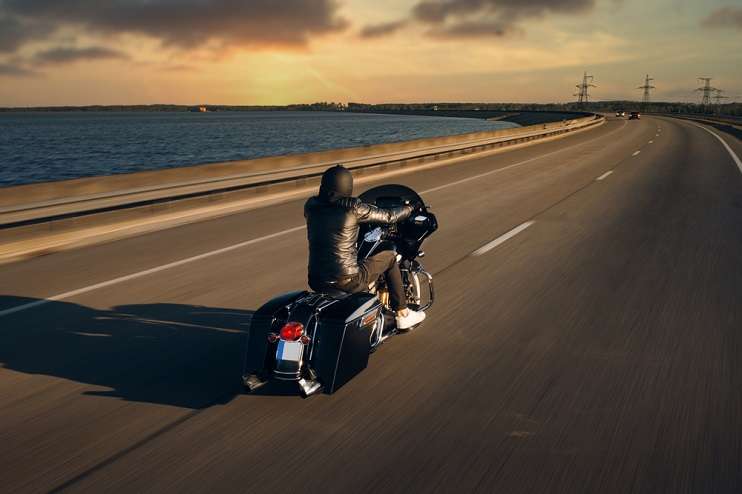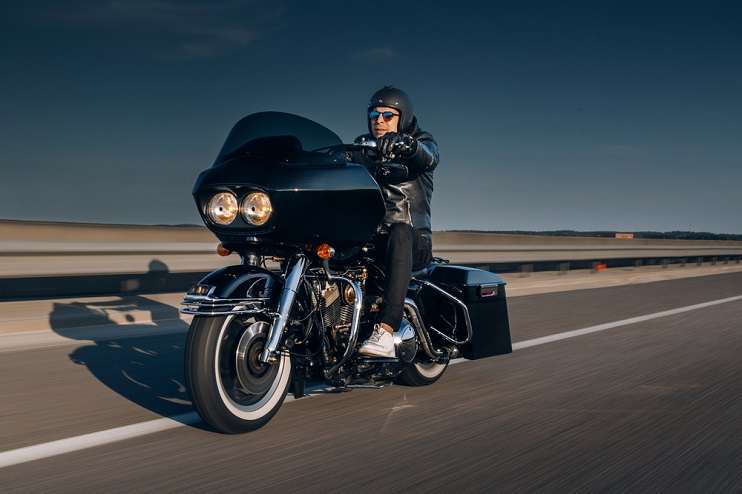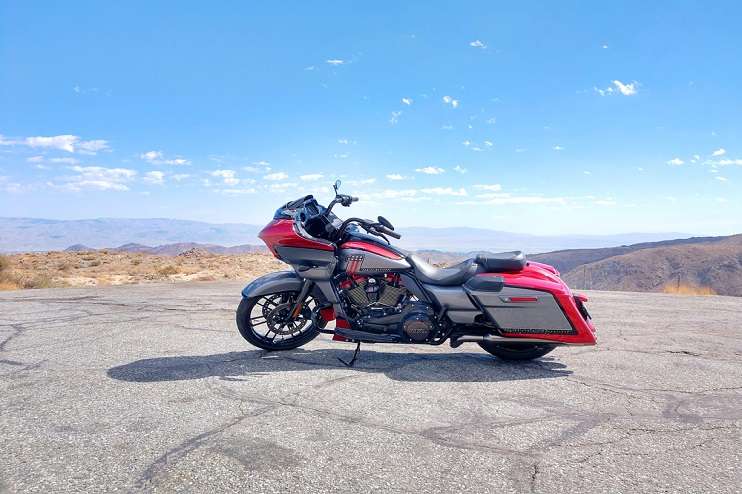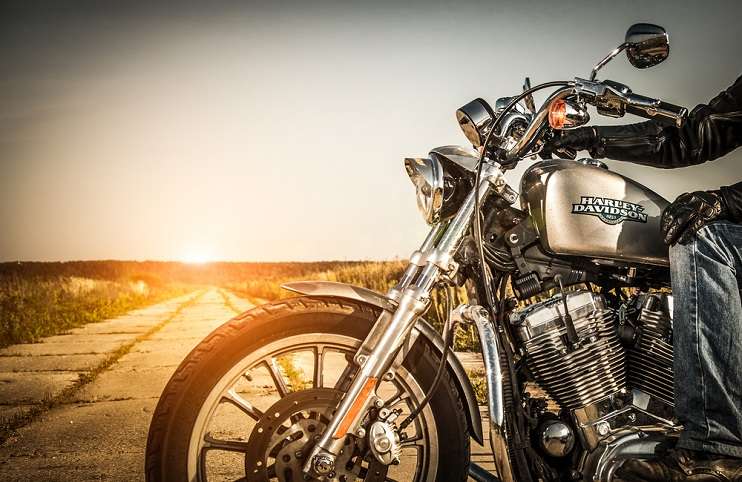At first glance, Harley Davidson’s Road Glide and Street Glide bikes might seem as if they’re practically the same thing. Even the linguistics behind the titles of both product lines are almost the same. However, if you spend even a minute talking to an experienced Harley rider, you’ll quickly figure out that the Road Glide vs Street Glide debate can get heated as dozens of tiny yet impactful differences spring up.
For a new rider looking to buy their first Harley, it can get confusing to listen to each side of the argument rave about why their preferred model is the best thing since sliced bread, and you should avoid the other one. Even if you’re experienced with more entry-level bikes and looking to upgrade, it can be daunting given how small the main game-changer is.
So, we will go over what differentiates the two bikes from each other, their impact on several aspects of bike ownership, and let you take the wheel from there.
Let’s get started with this ultimate Road Glide vs. Street Glide comparison.
Road Glide Vs. Street Glide: What’s the Big Deal?
You might not see anything different unless you know what you’re looking for by looking at a Road Glide and a Street Glide. Someone who doesn’t know anything about Harleys could easily confuse the two.
However, there is one big difference: the Road Glide’s fairing is mounted to its frame, but the Street Glide’s is mounted on the bike’s forks. Everything else, from the handlebars to the tailpipe, is the same.
So, wouldn’t that just be a minor cosmetic difference only the most nitpicky collectors would worry about? Do you really need to worry about it if you’re buying your first Harley? Won’t you enjoy the bike either way?
Well, no. That’s not the case. While the difference seems negligible and solely cosmetic, it actually impacts how you’ll feel on the bike.
Road Glide Vs. Street Glide: Specification Differences
Besides the aesthetic differences due to different mounting methods for the fairings, the two bikes actually have some specification differences that heavily impact various aspects of their riding versatility.
Mostly, these differences are between the trail and the ground clearance sizes.
The Road Glide sits much lower to the ground with a small 4.9-inch ground clearance, and the Street Glide gets a solid 5.3-inch ground clearance. As for the trails, the Road Glide gets a slightly larger trail at 6.8 inches, and the Street Glide comes in at 6.7 inches.

The differences between these two measurements seem negligible on paper, but they completely change how the bikes ride.
We’ll get into that more in the following section.
Road Glide Vs. Street Glide: Performance Differences
While the measurement differences are tiny, they significantly impact each bike’s performance.
Street Glide
With a larger ground clearance and tighter trail, the Street Glide takes corners like a champ, and it’s exceptionally comfortable to ride on much more complicated roads. Compared to the Road Glide, a slightly tweaked rider position aids this, which gives you a sense of control and finesse with the bike that you just don’t get with the Road Glide.
On top of that, the 100-cubic displacement engine is powerful enough to tear up the roadways and let it rip, but some slight tweaks make it a little less overwhelming on the straightaways. Not to mention, the Street Glide is a bit quieter than the Road Glide.
Furthermore, there is plenty of space for you to bring a passenger along, and the seating arrangement isn’t overly cramped or difficult to adjust to.
Road Glide
In comparison to the Street Glide, the lower ground clearance of the Road Glide makes it much heavier on turns. This makes it feel a bit clumsy and challenging when you take particularly windy roads or decide to take a Sunday cruise through a residential area.
However, its rider seating position, ample passenger seating, and a multitude of comfort-based accessories make it an absolute dream to ride on long straightaways with subtle curves, with or without a passenger.
Also, the Road Glide is built to open up on those long, straight highways, and it does not hold back its power. This is both good and bad, depending on your skill and riding preferences.
What is Each Bike for?
Not surprisingly, these bikes fill different yet similar roles given their performance differences. This might lend to some of the heated Road Glide vs. Street Glide debates between Harley fans; everybody has their own riding style and favorite routes, and if their bike matches that, they’re bound to support it until the end.
Bike Classification:
Oddly enough, both bikes are generically classified as touring bikes. They have their own distinct roles within the “touring” class, but no one is confusing a Street Glide for a racer or a Road Glide for the chopper.

Street Glide Overview:
The Street Glide excels for those who love to cruise urban areas or beautiful mountain landscapes. It may not be quite as comfortable or easily accessorized as the Road Glide, but the way it handles curves without wearing the rider out or getting a bit iffy makes it perfect for riders constantly leaning into the curve.
That doesn’t mean that you can’t do that stuff on a Road Glide, but you’ll have a much easier time with the Street Glide.
This makes the Street Glide the best option for those looking to tackle more urban or windy areas, where opening up the engine for long cruises on straight highways isn’t a common occurrence.
Road Glide Overview:
If you read the Street Glide overview, the Road Glide basically excels everywhere the Street Glide doesn’t. While it does get a bit cumbersome with frequent heavy turning, has a lower ground clearance that is no good for particularly rough roads, and is just a bit larger with its trail, it is an absolute beast if you want to hop on the highway, hit the throttle, and just cruise.
In a highway cruising setting, you don’t have to worry about too many deep curves that push the bike’s turning weight to the max, and the threat of rough roads banging up the bottom of your frame is almost nonexistent.
Not to mention, the rider positioning and ample passenger seating mean that you and a passenger can enjoy the ride like you’re in a luxury limo instead of flying along on a rough-and-tumble motorcycle. It’s just that comfortable.
That comfort level also lends the Road Glide to having exceptional performance on extremely long trips. Suppose you want to take your Road Glide on the highway from North Carolina to Washington. In that case, you can do that without worrying about the rider’s positioning causing back pain or discomfort, and its highway performance will ensure the ride is pleasurable the whole way.
Of course, nothing stops you from doing the same with your Street Glide. You just won’t be as comfortable on those long highway trips. You can also take the Road Glide through your local urban area, but the heavy turning might wear you out.
As one final bonus for the Road Glide, it has an extraordinary lineup of accessories from both Harley and third-party companies. That means you can easily deck it out to the gills with almost any motorcycle accessory you can imagine without shelling out for custom creations.
Also, check: The Best Harley Davidson Motorcycle Helmets | Cruising Safety
Choosing the Right One for You:
As you can see from this Road Glide vs. Street Glide comparison, both bikes do different things better than the other, but they can each still do the things they’re not necessarily best at. So, choosing the right one for you should come down to personal preference and an honest assessment of how you’ll use the bike.
Also check: The Best Motorcycle Lift Table for Harley Davidson [Top 10 List]
It’s recommended in the biking community, and even by Harley itself, to try both out. With these being on the more high-end side of the price spectrum, we’re not telling you to buy one of each. Just make sure you purchase your bike from a dealership or private seller willing to let you take each one for a test drive. See how you feel on each bike, if applicable; take each one to your favorite riding area, and get a few miles in with each one. That will make your choice a no-brainer pretty quickly.
Road Glide Vs. Street Glide: Pricing, Extra Considerations, and Miscellaneous Differences
We’ve covered the significant differences each of these bikes has, but that’s not all. There’s the big question about prices, and there are some other minor differences to consider.

Let’s go over them.
Pricing:
The price of each bike is in the high-end range, but there is a considerable difference between the two. A Street Glide goes for roughly $30,000 MSRP. A Road Glide goes for just over $41,000 MSRP. You’re not likely to pay that unless you go to a cheeky dealership or an overzealous private seller, but that’s still an $11,000 difference. On average, you can expect to pay about $20,000 and $30,000 on the low end of each bike, respectively. That can very quickly make your decision unless you’re a particularly high-earning worker or happen to be good at saving.
The Fairing isn’t Just Cosmetic:
The minor specification differences aren’t the only things that cause major performance differences. The fairing, while mostly different cosmetically, does create some minor differences.
First, the way each model mounts its fairing gives each bike its own unique feel. Obviously, these are Harleys. They’re made to high standards, and you won’t have difficulty turning the handlebars on either bike. However, it will feel different, and this is something that matters to experienced riders. Let’s face it. If you’re about to spend $30,000 on a bike, you’re probably a bit more experienced than the guy buying a $5000 bike, and you will notice the difference.
Beyond that, the wind is also a minor concern. Both bikes offer some wind protection, but the Road Glide is known for being a little better at it. The fairing is slightly higher with its frame-mounted attachment point on the Road Glide. It’s not much, but it is enough to produce a noticeable difference in how much wind hits your face during a ride. That is also why it’s a little better for highway riding.
Accessories are Important:
We mentioned earlier that the Road Glide had more first and third-party accessories available. That’s not something to take lightly. As you grow to love your new bike, you will undoubtedly want to personalize it. There are many options available for the Street Glide in stores and online, but the Road Glide has so much random stuff you can jam on it that you probably won’t ever consider contacting a custom accessory maker. That can make a big difference in the long run.
Pick the Right Bike for You and Enjoy the Ride with TheMotorBiker
We hope you enjoyed this Harley Davidson Road Glide vs. Street Glide comparison and that we helped you make the best buying decision.
Choosing between Road Glide and Street Glide is mostly a preference-based decision. Yeah, both bikes perform differently and have various strengths and weaknesses, but they’re both touring bikes, and they can cross over into the other’s territory. You need to try each one out and see what you like most. The differences might be small enough for you to go with the cheaper option, or you might absolutely loathe one of them.
Either way you go, TheMotorBiker has your back. We have loads of in-depth guides on everything from motorcycle maintenance to Harley Davidson buying guides, such as Best LED Headlights, Best Battery for Harley Davidson, or Harley Davidson shocks. It’s our goal not just to help you pick the right bike but to enjoy every second you spend on it and maintain it well enough that you keep enjoying it for years to come.


